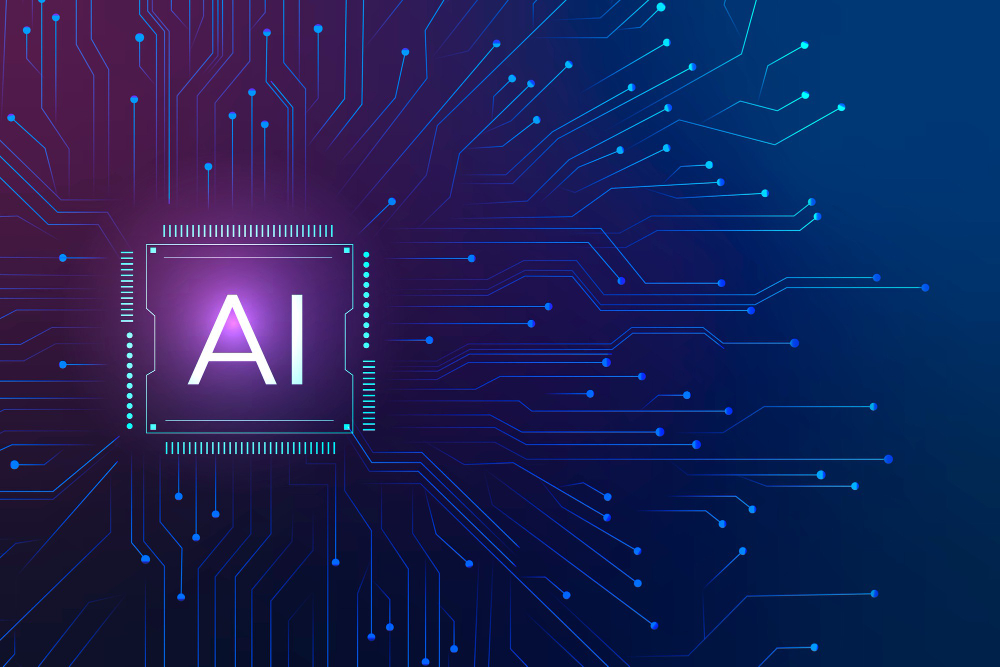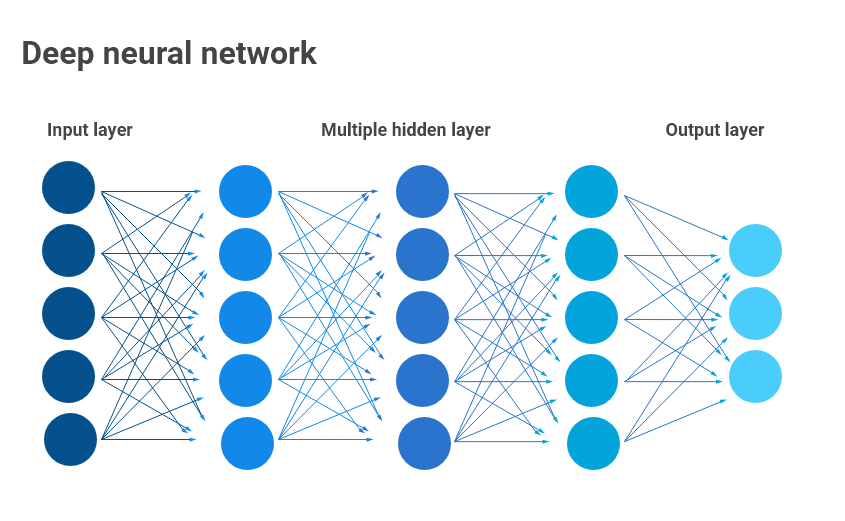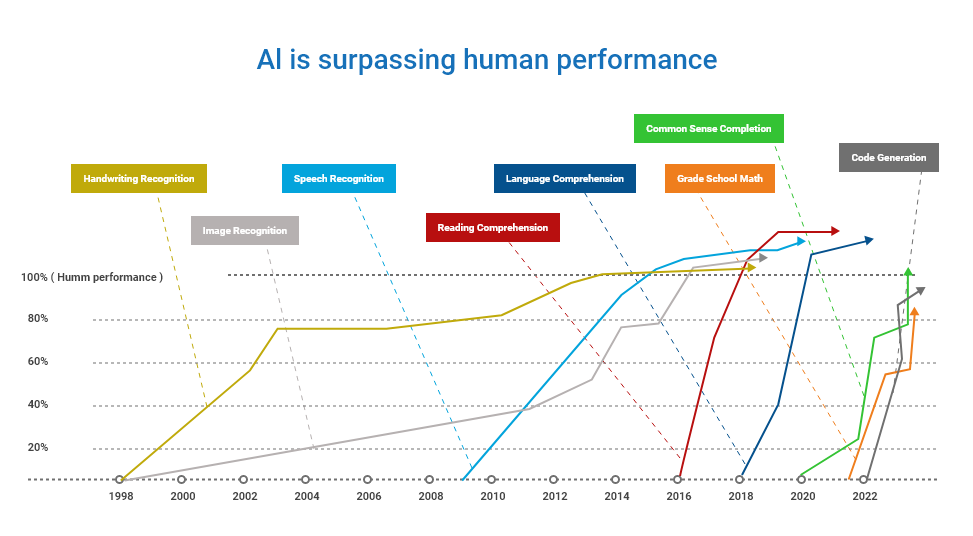UiPath’s strategy for AI powered automation at work
- Featured Insights
- November 21, 2023
Artificial Intelligence has always been there in academics; however, the enterprise world has recently begun using it better. The recent advancements in AI can be credited to the enhanced infrastructure and the vast, vast availability of information. Earlier, it was hard to train AI models. The data was always extensive, but the computing power that was required to train that data was lacking. Today, as a species, we have the computing and the infrastructure prowess to train our data, and the results are very much visible with AI-powered automation.
AI has rapidly grown in the last decade, surpassing human performance separately in cognitive aspects like visual, interpretation, audio, and voice. The primary goal of AI has always been to replace or reduce human involvement and make systems perform like humans, or better, at times. Today, AI experts call it perceptive since AI can perceive the world and recognize different objects in multiple data formats. It’s like a child developing its understanding of the world as it witnesses life.
There are tasks where AI now surpasses humans. Tasks like comprehension, speech recognition, image recognition, language interpretation etc. What was previously considered mundane and time-consuming is now automated.

The Challenge Now Lies In Turning Perceptive AI Into Creative AI
Neural networks are the answer to this challenge, designed to replicate the human brain’s functioning. Artificial Neural Networks (ANN) consist of 3 layers—input, hidden, and output—connected by nodes called neurons. Each neuron has its weight and threshold. The input for each layer comes from the previous layer’s output, and the output is determined by multiplying inputs with weights and then summing them. The signal moves to the next layer if the output surpasses the threshold.
As these efforts to mimic the human brain have evolved, enterprise AI adoption has increased. Multiple specialized models offer businesses swift and cost-effective AI solutions. Yet, challenges emerge when these models must grasp diverse data variations. Since existing models are trained on specific datasets, adapting to varied data intricacies mandates retraining, necessitating labeled data and substantial computing resources.
A report by Uipath and Bain & Co. indicates that 70% of the population believes AI automation is crucial for their organization’s objectives, with 74% expecting a positive return on the AI investment. Despite leaders’ eagerness to implement AI in their companies, 45% have not started due to challenges, especially around trust, as per a McKinsey report, putting a pause on these endeavors.

Uipath Approach To Include AI At Work
UiPath addresses business challenges with a bold solution to seamlessly integrate AI with user-friendly interfaces, accelerating AI implementation for more efficient and faster human work.
AI-powered automation tackles routine tasks, enhancing workspace dynamics and overall productivity, and lays the foundation for the much anticipated four-day workweek without hindering output.
UiPath’s platform blends RPA with specialized AI, providing diverse automation capabilities, streamlining processes, reducing errors, and improving experiences for customers and employees, ultimately making businesses smarter and more efficient.
The key highlights of the latest platform release include:
- UiPath Autopilot™ – An intelligent desktop assistant capable of understanding natural language prompts, figuring out process next steps, and translating them into workflow automation. It is integrated with UiPath’s platform, enabling the reuse of building blocks and interaction with Studio, Apps, and test suite.
- GenAI Platform Connectors: This release previews new connectors for Gen AI and adds support for key ecosystems and models, including OpenAI, Google Vertex AI, AWS Bedrock, and Meta.
- UiPath Document Understanding – A machine learning-powered product that allows businesses to extract information from documents leveraging Gen AI to facilitate extraction, classification, and model pre-labeling, accelerating model training by 80%.
- UiPath Communications Mining uses a combination of Specialized AI and Gen AI to deliver answers to reporting and analytics queries faster for improved business insights.
- Coded Automation: Capability of delivering fully coded automation along with using low-code activities.
- Consistent VB expressions across UiPath Apps and UiPath Studio for more power and flexibility.
In addition to the new features and products that take part in this latest release, Uipath is also partnering with applications like SAP to facilitate automation and integration for ERP business users, to a point where Uipath is targeted to become an SAP solution extension partner embedding more capabilities in SAP pricelist to bring everything closer.
This latest platform release addresses main enterprise AI implementation challenges in 3 different ways:
- Context: AI is only as good as the information that it is trained on; it integrates data sources and AI through an integration service to enhance the information AI is trained on.
- Action: Gen AI provides creative capabilities, enabling AI to move beyond simple tasks to valuable actions or decisions.
- Trust: Leaders want to embrace AI but minimize the risks. Uipath established a secure trust layer incorporating human feedback over AI decisions, minimizing risks.
AI-Powered Automation Is The Future
AI is an automation accelerator, but its successful implementation requires careful consideration:
- Companies must create an environment where employees adopt the automation mindset, it is much more productive when an employee envisions the automation benefits in their daily workload
- Looking at the process end to end, is crucial for maximizing ROI. This comprehensive approach enables the creation of an integrated solution based on process improvement, preventing the issue from being passed from one step to another.
- Before implementing any AI solution, companies must establish the right environment among collaborators. This involves demonstrating the advantages of AI and how it can be a valuable tool for addressing various tasks in their processes.
The role of humans will shift towards more creative tasks, making jobs more appealing and challenging. As AI takes over routine tasks, humans are responsible for contributing what AI cannot comprehend: ethics.
